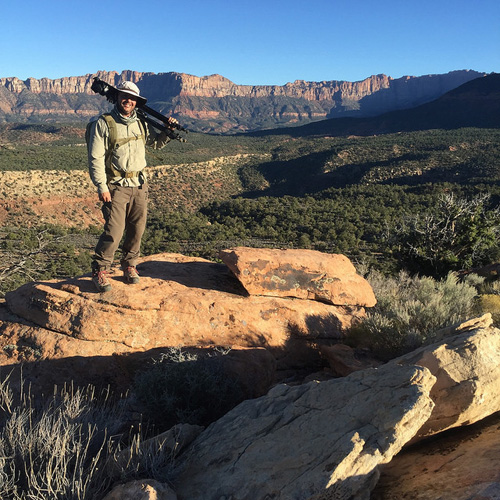Posted: 10/16/17
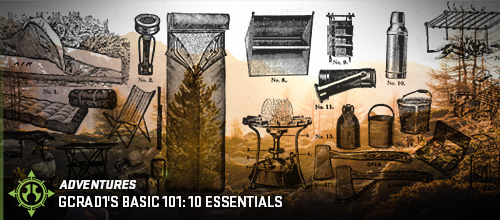
Words: Rodney Wills aka GCRad1
Let's get down to reality. We are grown adults playing with toy trucks! Yes, I said it out loud. But today, that is besides the point, yet is the cause for this article. We are often times so enthusiastic with our hobby, we tend to neglect "the three basics" along with backpacking's 10 essentials once we are full-steam into our enthusiastic adventure pursuit of escapism aka scale trailing, RC adventuring hiking...
No mater what you call it, you know you forgot to drink water and bring snacks on that last RC adventure hike! Nothing wrong with that, but these three basics are the things that matter most in life! Food - Water - Shelter.
• One can not go without water for roughly 7-days
• One can not go without food for roughly 21-days
• One can not survive hypothermia for extended periods
Water, food and shelter are provided to us from day one, until we learn how to provide for ourselves. These are the simple truths of life.

I hear watchyasayin, "Come on! I don't want to read all this philosophical Rad1 rhyming rhetoric! Get on with it!"
But back to our pursuit of play. No matter if you are hiking, camping, off-roading or mountain biking, food-water-shelter are the three raw basic essentials across the board. The root of the Axial brand is the SCX10, THE adventure rig! Thus hiking with your SCX10 can take you into a world of adventure beyond the backyard boundaries. Your rig is adventure ready right out of the box as seen in our 2012 trek Across Rubicon, but are you?
You know I love adventures of all sorts and some of you may know I've been very passionate about bicycling as well. While I like all the hard parts techno-babble lust, it's the physical engine on the bike that makes a grandpa on his '80's 20-lbs steel frame bike smoke a dude on his 14-lbs all carbon bike! It's been my interest in cycling that has built my passion for attempting to be more physically fit so I can take on all these adventures. But simply walking into a bike shop and asking questions on physical performance will NOT get you what you want, rather what they want to sell you. What you need is information first and I have spent a many nights doing my research and Hammer Nutrition has given me some serious education over all the other brands. Lets start at the beginning.
WATER
The single most important element, water. Yea, sure... we've all gone without it for a few hours on a hike or ride, but how did you feel afterwards? How did you feel the next day? Often times, doing the right thing now for your body doesn't give you instant results, but the effects of properly hydrating means you will be better suited for tomorrow. And as I age, I only find it more important! Here you thought it was just your job on Monday that made you feel like crap... OK, maybe the margarita too. Back to education.
I like the fact that Hammer Nutrition will tell you that you do not have to buy their products, others will work, but they are winning my dollars with their education!
Let's start with, "Keep fluid intake during exercise between 16-28 ounces per hour."
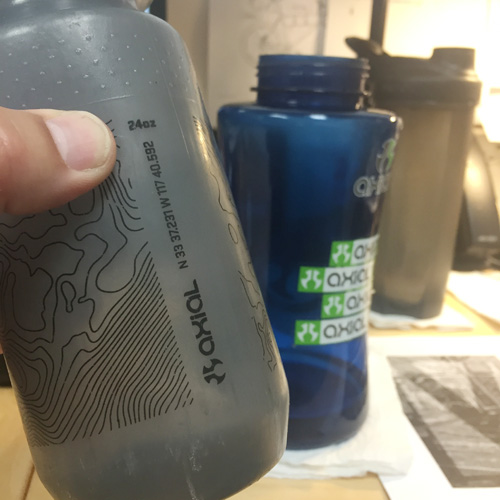
You ever notice the 24oz symbol on your AXIALFEST water bottles? There for a
reason! Here is some more great education from Hammer Nutrition.
Hydration - What You Need to Know & How your cooling system works hit that link and make sure you read down to the "ELECTROLYTE REPLENISHMENT - Why it's so important and how to do it right" link too. That's a lot of information just about water!
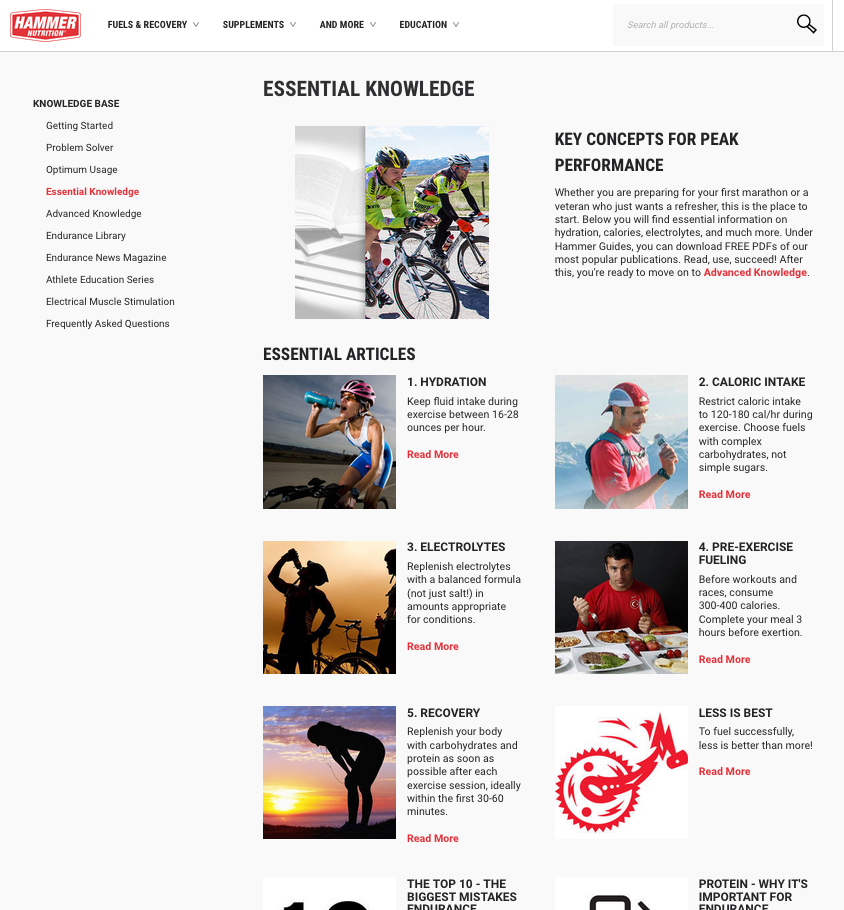
As you can see, HYDRATION is the first on their Essential Knowledge list and Hammer Nutrition does NOT sell you any sort of super advanced coal mined calcine denatured bio-lab fortified pasteurized WATER!
ZERO TO FULL PUNCH IN 2.2 SECONDS
Now, while a lot of Hammer's info is geared towards endurance athletes (all you ULTRA 5K ENDURO guys should be reading every ounce), everything is a sliding scale that you will tailor to your physical needs. My rule of thumb, if this is what gets you to peak performance levels, I can scale down to my personal needs.
We all start at zero with the outer limit being the unknown. Getting a grasp on the outer limit now gives us a "window" or sliding scale to work from to suit or test our needs. You can't go from zero to "FULL PUNCH" in 2.2-seconds and not expect consequences. You have to build up.It's baby-steps, building blocks built on time, thus patience is involved in building endurance to tap out miles on a bike or a hike.
Another good story on water: https://www.thehikinglife.com/health-safety/hydration/
FOOD
You may have heard me refer to my Scooby Snacks and ScottG calls it my "cardboard bars" but when we are on our go-missions, I like to travel light and physically fuel as simple and efficiently as I can. Again, through cycling I've learned about proper nutrition for physical activities.

Photo courtesy of Rob Stinnett on Flickr.com
Yes, I started with the original, the PowerBar somewhere around 1988 when I moved down to southern California and started mountain biking. I've tried them all! I technically don't have a hands down favorite... it's like saying I only eat hamburgers. I like variety and switch around with both brands and flavors. But the most important part of all is getting good calories into your system vs "sugar-crash" calories from candy bars.
SHELTER
We come into this world naked, thus clothing starts as a basic of shelter within a shelter of our homes of which our parents all provide for us. No, I'm not going to show any baby-nakee photos! But, our parents dress us, we revolt, we make bad decisions, our parents tell us to "bring a jacket!" then that one day, they don't tell us... we learn through tough tactile relationship with mother earth no matter how many times our parents TOLD us to "bring a jacket!" (bonus reading)
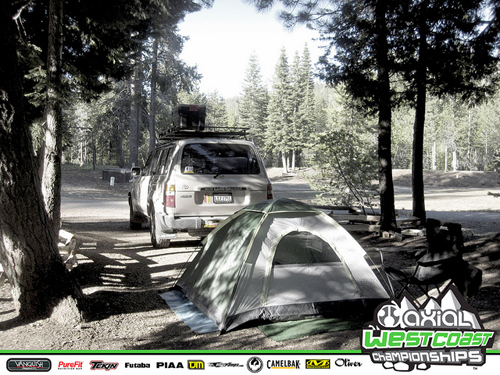
PACKING THE TEN ESSENTIALS
Whenever you step into the back country, even on day hikes, is a good habit to have the essentials. True, on a routine trip you may use only a few of them. Yet you’ll probably never fully appreciate the value of the Ten Essentials until you really need one of them. That's the whole idea behind being prepared! It's almost like preventative maintenance, having the tools to fix yourself. It's the 5.11 Tactical motto "ALWAYS BE READY."
The original Ten Essentials list was assembled in the 1930s by The Mountaineers, a Seattle-based organization for climbers and outdoor adventurers, to help people be prepared for emergency situations in the outdoors. In 2003, the group updated the list to a “systems” approach rather than listing individual items (for example, map and compass now fall into the Navigation “system”.)
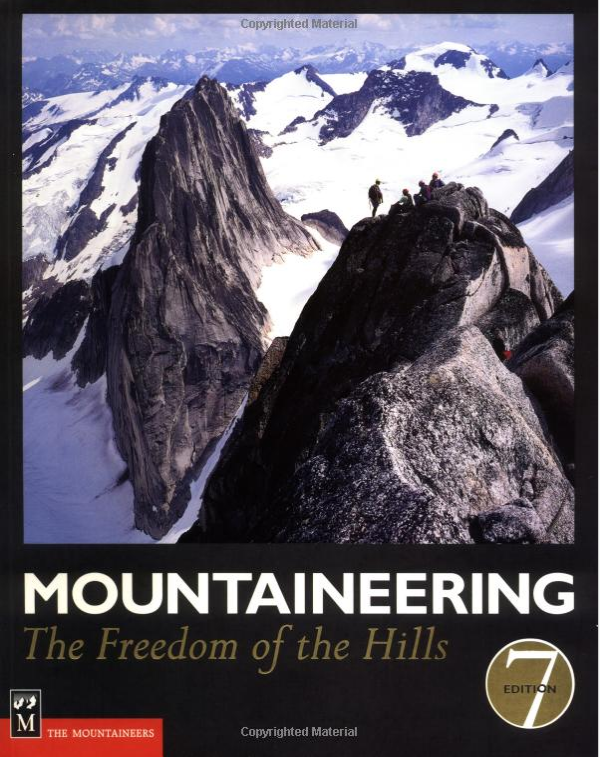
The updated "systems" approach made its debut in The Mountaineers’ seminal text on climbing and outdoor exploration, Mountaineering: The Freedom of the Hills (The Mountaineers Books), now in its ninth edition! See the book here: https://www.mountaineersbooks.org/Mountaineering-Freedom-of-the-Hills-9th-Edition-Softcover-P1882.aspx
Since we are all just learning this together, lets start with the original list:
THE 10 HIKING ESSENTIALS
1. Appropriate footwear. For a short day hike that doesn’t involve a heavy pack or technical terrain, trail shoes are great. For longer hikes, carrying heavier loads, or more technical terrain, hiking boots offer more support.
2. Map and compass/GPS. A map and compass not only tell you where you are and how far you have to go, it can help you find campsites, water, and an emergency exit route in case of an accident. While GPS units are very useful, always carry a map and compass as a backup.
3. Extra water and a way to purify it. Without enough water, your body’s muscles and organs simply can’t perform as well. Consuming too little water will not only make you thirsty, but susceptible to hypothermia and altitude sickness.
4. Extra food. Any number of things could keep you out longer than expected: getting lost, enjoying time by a stream, an injury, or difficult terrain. Extra food will help keep up energy and morale.
5. Rain gear and extra clothing. Because the weatherman is not always right. Dressing in layers allows you to adjust to changing weather and activity levels. Two rules: avoid cotton (it keeps moisture close to your skin) and always carry a hat.
6. Safety items: fire, light, and a whistle. The warmth of a fire and a hot drink can help prevent hypothermia. Fires are also a great way to signal for help if you get lost. If lost, you’ll also want the whistle as it is more effective than using your voice to call for help (use 3 short bursts). And just in case you’re out later than planned, a flashlight/headlamp is a must-have item to see your map and where you’re walking.
7. First aid kit. Prepackaged firstaid kits for hikers are available at any outfitter. Double your effectiveness with knowledge: take a firstaid class with the American Red Cross or a Wilderness First Aid class.
8. Knife or multipurpose tool. These enable you to cut strips of cloth into bandages, remove splinters, fix broken eyeglasses, and perform a whole host of repairs on malfunctioning gear.
9. Sun screen and sun glasses. Especially above treeline when there is a skinscorching combination of sun and snow, you’ll need sunglasses to prevent snow blindness and sunscreen to prevent sunburn.
10. Daypack/backpack. You’ll want something you can carry comfortably and has the features designed to keep you hiking smartly. Don’t forget the rain cover; some packs come with one builtin.
The 2003 Updated Ten Essential "Systems" from The Mountaineers
Navigation (map and compass)
Sun protection (sunglasses and sunscreen)
Insulation (extra clothing)
Illumination (headlamp/flashlight)
First-aid supplies
Fire (waterproof matches/lighter/candles)
Repair kit and tools
Nutrition (extra food)
Hydration (extra water)
Emergency shelter
In 2003, the essential list was revised as part of the 7th-edition of "Mountaineering: "The Freedom of the Hills" to keep up with modern equipment. The 8th-edition continues with the new essentials list with no major revisions. The list takes a "systems approach" giving more definition to each subject or function.
Hydration: Add extra 2 liters of water for one additional day (for emergency).
Nutrition: Add extra food for one additional day (for emergency). Dry food is preferred to save weight and usually needs water.
Navigation: Topographic map and assorted maps in waterproof container plus a magnetic compass, optional altimeter or GPS receiver.
Sun protection: Sunglasses, sunscreen for lips and skin, hat, clothing for sun protection.
Insulation: Hat, gloves, jacket, extra clothing for coldest possible weather during current season.
Illumination: Headlamp, flashlight, batteries. LED bulb is preferred to extend battery life.
First Aid: supplies, plus insect repellent.
Fire: Butane lighter, matches in waterproof container.
Repair kit and tools: Knives, multi-tool, scissors, pliers, screwdriver, trowel/shovel, duct tape, cable ties.
Emergency shelter: Tarp, bivouac sack, space blanket, plastic tube tent, jumbo trash bags, insulated sleeping pad.
OK, so there you have it, the first installment of the GCRad1's Basic 101!
Stay young, play hard and get your RC Adventure Hike on!
Always in search of adventure one rock at a time! - Rodney Wills.
